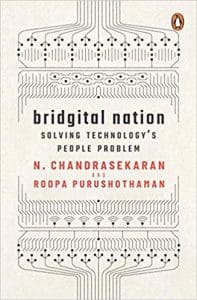In India, a woman’s path from education to work is often permanently interrupted—by marriage, family wishes, children, societal pressures. Their absence comes at a cost. India has an enormous number of secondary-educated women who are inaccessible to the workforce. This means the economy gets hit twice: first, just 33 per cent of all workers in India have a secondary (or above) education.
The hard facts
Second, millions of educated people remain outside of the workforce. Nearly 120 million women in India—more than double the entire population of South Korea—have at least a secondary education, but do not participate in the workforce.
For a country that needs millions of professionals urgently for vital skilled jobs, these millions of women provide a powerful answer. If even half of this group entered the workforce, the share of workers with at least a secondary education would jump from 33 per cent of the total workforce to 46 per cent—the equivalent of the last decade and a half’s worth of improvement in this metric.
Also read: Naukri is the new mehngai but the opposition just doesn’t get it
How women’s participation can spur GDP
In one stroke, their engagement could add 31 trillion ($440 billion) to India’s GDP.3 Indian women want to work. Three-quarters of teenage girls in a national survey of over 70,000 girls said they wanted a career after graduating, and expressed specific career aspirations. In a national survey in 2012, when researchers surveyed women engaged in domestic duties, almost one in three said they would accept paid work if a good opportunity arose.
If every woman who said they would take up paid work ended up doing so, India’s workforce participation for women could touch nearly 80 per cent.4 Despite the pressing case for women working, just 23 per cent of Indian working-age women are in the labour force. Among G20 states, India is second-to-last in terms of women’s participation, with Saudi Arabia alone ranking lower. India is not only well below its neighbours (roughly 80 per cent of Nepali women work), but also countries of similar income levels
Worryingly, trends show that women’s work participation in India is not only low, it’s falling. At a time when India’s economy reportedly grew over 7 per cent on average over the past decade, increased opportunities should have set the stage for a rise in women’s work. Instead, the opposite has happened: 19 million fewer women participated in paid work in 2017 than in 2011. There are complex reasons for the steep decline.
***
It is important to keep in mind that half of Indian women are married by the age of nineteen. One in three women have had a child before the age of twenty.3 In developed economies, anywhere between 50 and 80 per cent of women in the age group 25-35 join the workforce. India charts its own path: In that age group, only one in four women engage in paid work.
Why is the shape for India different when it comes to the U- and M-curves? During the course of our research, we came across diverse forces that play a major role in women not working. These forces are not unique to India, but the extent to which they play out is significant. Largely, they fall into three categories:
Also read: In India’s quest for jobs, here’s what Modi government’s policy agenda should be
Unpaid Work
Women work, but aren’t paid for their efforts. Data shows that Indian women are responsible for 87 per cent of unpaid care work—one of the highest shares in the world, far higher than China (at 72 per cent) and the US (at 61 per cent). This is the work of caring for children and elders, of managing a household.
The magnitude of work cannot be overstated. In India, women perform 9.8 times as much care work as men. That is, for every hour of housework that men put in—cleaning, nurturing, cooking, teaching, advising, managing—women put in ten hours. This is another kind of a shadow economy; it demands work and sacrifice, but there’s no pay cheque at the end of the month.
If all this unpaid work were valued and compensated in the same way as paid work, it would contribute $300 billion to India’s economic output.
Safety and Mobility
More often than not, when Indian women decide to take up work, the calculation includes an additional item: The cost of safe travel. The habit starts even before work. College-going women in Delhi are willing to spend `18,000 ($257) more than men on safer commuting options annually. Women prefer attending less prestigious colleges if they can travel via a safer route. When it comes to work, one survey shows, a large number are willing to migrate for work, but they are outnumbered by those who feel unsafe being away from home.
According to the World Bank economist Girija Borker, ‘women’s willingness to pay for safety translates into a 20 per cent decline’ in the salaries they could have earned after graduating college.
A typical educated, urban working woman with a child loses over 15 per cent of salary to the gender pay gap and about one-sixth to childcare. Her commute is more expensive than her male counterparts, because she chooses safer options like grabbing a taxi at night from the train station to her home, rather than walking. For a woman, the act of working is an expensive one.
Also read: Don’t just blame patriarchy for fewer women in India’s job force. Blame our cities too
Underlying Gender Norms
Gender expectations start early and can be borne out in census numbers: Between 2001 and 2011, India’s child sex ratio further deteriorated from 927 girls to 919 girls for every thousand boys, reflecting a preference for sons.
The reasons for son preference are far from uniform, and shift dramatically across regions and cultures. In some areas, traditions and norms leading to son preference include keeping property in the family, avoiding paying dowry, having support close at hand in parents’ old age (daughters typically marry and move away), and because sons perform last rites. Even in matrilineal societies across the country, evidence for son preference can be found.
Expectations about gender roles play into routine daily activities. In a nationwide survey, 80 per cent of women said they needed permission from a family member to visit a health centre and 58 per cent needed permission to visit the local kirana (grocery) store.8 Without the freedom of movement to conduct everyday tasks, discussing the opportunities of doing paid work away from home takes on new heights.
These three broad sets of interwoven issues—unpaid work, safety and mobility, and underlying gender norms—have deep roots, but sometimes it takes just one outlier, like a determined woman in Punjab, to upend notions of what seems possible.
 This excerpt from the book Bridgital Nation: Solving Technology’s People Problem by N. Chandrasekaran and Roopa Purushothaman has been published with permission from Penguin Random House India.
This excerpt from the book Bridgital Nation: Solving Technology’s People Problem by N. Chandrasekaran and Roopa Purushothaman has been published with permission from Penguin Random House India.






